美国<<X-家族>>
来源:百度文库 编辑:超级军网 时间:2024/04/26 15:36:56
<P>[center]
X-1验证机

 </P>
</P>
<P>The Bell X-1-1 was equipped with a 10 percent wing and 8-percent tail, (measured as the thickness divided by the chord of the airfoil), powered with an XLR-11 rocket engine and was air-launched from under a B-29A (45-21800). The X-1-1 was glide-
tested at Pinecastle Army Air Field, Orlando, Florida, beginning on January 25, 1946. The first powered flight of the X-1-1 was made on April 11, 1946, at Muroc Army Air Field with Chalmers "Slick" Goodlin, a Bell test pilot, at the controls.</P>
<P>On October 14, 1947, with USAF Captain Charles "Chuck" Yeager as pilot, the X-1-1 flew faster than the speed of sound for
what is generally accepted as the first supersonic flight by a piloted aircraft. Captain Yeager ignited the four-chambered XLR-11 rocket engines after being air-launched from under the bomb bay of a JTB-29A (#45-21800) at 21,000 feet. The 6,000-pound thrust ethyl alcohol/liquid oxygen burning rockets, built by Reaction Motors, Inc., pushed him up to a speed of approximately
700 mph, or Mach 1.06, at an altitude of 43,000 feet.</P>
<P>On January 5, 1949, the X-1-1 aircraft with Yeager as pilot achieved the only ground takeoff of the X-1 program. He reached
just over 23,000 feet before the limited propellant was exhausted.</P>
<P>Captain Yeager was also the pilot when the X-1-1 reached its maximum speed, Mach 1.45. Another USAF pilot. Lt. Col. Frank Everest, Jr., was credited with taking the X-1-1 to its maximum altitude of 71,902 feet.</P>
<P>The X-1-1 retired on May 12, 1950 after making eighty-two glide and powered flights with ten different pilots. On August 26,
1950 the aircraft became a permanent resident of the National Air Museum, In Washington, D.C.</P>
<P>


 [/center]</P>
[/center]</P>
X-1验证机

 </P>
</P>
<P>The Bell X-1-1 was equipped with a 10 percent wing and 8-percent tail, (measured as the thickness divided by the chord of the airfoil), powered with an XLR-11 rocket engine and was air-launched from under a B-29A (45-21800). The X-1-1 was glide-
tested at Pinecastle Army Air Field, Orlando, Florida, beginning on January 25, 1946. The first powered flight of the X-1-1 was made on April 11, 1946, at Muroc Army Air Field with Chalmers "Slick" Goodlin, a Bell test pilot, at the controls.</P>
<P>On October 14, 1947, with USAF Captain Charles "Chuck" Yeager as pilot, the X-1-1 flew faster than the speed of sound for
what is generally accepted as the first supersonic flight by a piloted aircraft. Captain Yeager ignited the four-chambered XLR-11 rocket engines after being air-launched from under the bomb bay of a JTB-29A (#45-21800) at 21,000 feet. The 6,000-pound thrust ethyl alcohol/liquid oxygen burning rockets, built by Reaction Motors, Inc., pushed him up to a speed of approximately
700 mph, or Mach 1.06, at an altitude of 43,000 feet.</P>
<P>On January 5, 1949, the X-1-1 aircraft with Yeager as pilot achieved the only ground takeoff of the X-1 program. He reached
just over 23,000 feet before the limited propellant was exhausted.</P>
<P>Captain Yeager was also the pilot when the X-1-1 reached its maximum speed, Mach 1.45. Another USAF pilot. Lt. Col. Frank Everest, Jr., was credited with taking the X-1-1 to its maximum altitude of 71,902 feet.</P>
<P>The X-1-1 retired on May 12, 1950 after making eighty-two glide and powered flights with ten different pilots. On August 26,
1950 the aircraft became a permanent resident of the National Air Museum, In Washington, D.C.</P>
<P>


 [/center]</P>
[/center]</P>
[此贴子已经被作者于2005-1-19 19:05:49编辑过]
X-1验证机

 </P>
</P><P>The Bell X-1-1 was equipped with a 10 percent wing and 8-percent tail, (measured as the thickness divided by the chord of the airfoil), powered with an XLR-11 rocket engine and was air-launched from under a B-29A (45-21800). The X-1-1 was glide-
tested at Pinecastle Army Air Field, Orlando, Florida, beginning on January 25, 1946. The first powered flight of the X-1-1 was made on April 11, 1946, at Muroc Army Air Field with Chalmers "Slick" Goodlin, a Bell test pilot, at the controls.</P>
<P>On October 14, 1947, with USAF Captain Charles "Chuck" Yeager as pilot, the X-1-1 flew faster than the speed of sound for
what is generally accepted as the first supersonic flight by a piloted aircraft. Captain Yeager ignited the four-chambered XLR-11 rocket engines after being air-launched from under the bomb bay of a JTB-29A (#45-21800) at 21,000 feet. The 6,000-pound thrust ethyl alcohol/liquid oxygen burning rockets, built by Reaction Motors, Inc., pushed him up to a speed of approximately
700 mph, or Mach 1.06, at an altitude of 43,000 feet.</P>
<P>On January 5, 1949, the X-1-1 aircraft with Yeager as pilot achieved the only ground takeoff of the X-1 program. He reached
just over 23,000 feet before the limited propellant was exhausted.</P>
<P>Captain Yeager was also the pilot when the X-1-1 reached its maximum speed, Mach 1.45. Another USAF pilot. Lt. Col. Frank Everest, Jr., was credited with taking the X-1-1 to its maximum altitude of 71,902 feet.</P>
<P>The X-1-1 retired on May 12, 1950 after making eighty-two glide and powered flights with ten different pilots. On August 26,
1950 the aircraft became a permanent resident of the National Air Museum, In Washington, D.C.</P>
<P>


 [/center]</P>
[/center]</P>[此贴子已经被作者于2005-1-19 19:05:49编辑过]
<P>[center]X-1验证机

 </P>
</P><P>The Bell X-1-1 was equipped with a 10 percent wing and 8-percent tail, (measured as the thickness divided by the chord of the airfoil), powered with an XLR-11 rocket engine and was air-launched from under a B-29A (45-21800). The X-1-1 was glide-
tested at Pinecastle Army Air Field, Orlando, Florida, beginning on January 25, 1946. The first powered flight of the X-1-1 was made on April 11, 1946, at Muroc Army Air Field with Chalmers "Slick" Goodlin, a Bell test pilot, at the controls.</P>
<P>On October 14, 1947, with USAF Captain Charles "Chuck" Yeager as pilot, the X-1-1 flew faster than the speed of sound for
what is generally accepted as the first supersonic flight by a piloted aircraft. Captain Yeager ignited the four-chambered XLR-11 rocket engines after being air-launched from under the bomb bay of a JTB-29A (#45-21800) at 21,000 feet. The 6,000-pound thrust ethyl alcohol/liquid oxygen burning rockets, built by Reaction Motors, Inc., pushed him up to a speed of approximately
700 mph, or Mach 1.06, at an altitude of 43,000 feet.</P>
<P>On January 5, 1949, the X-1-1 aircraft with Yeager as pilot achieved the only ground takeoff of the X-1 program. He reached
just over 23,000 feet before the limited propellant was exhausted.</P>
<P>Captain Yeager was also the pilot when the X-1-1 reached its maximum speed, Mach 1.45. Another USAF pilot. Lt. Col. Frank Everest, Jr., was credited with taking the X-1-1 to its maximum altitude of 71,902 feet.</P>
<P>The X-1-1 retired on May 12, 1950 after making eighty-two glide and powered flights with ten different pilots. On August 26,
1950 the aircraft became a permanent resident of the National Air Museum, In Washington, D.C.</P>
<P>


 [/center]</P>
[/center]</P>[此贴子已经被作者于2005-1-19 19:05:49编辑过]
[center]




 [/center]
[/center]




 [/center]
[/center][center]





 [/center]
[/center]





 [/center]
[/center][center]





 [/center]
[/center]





 [/center]
[/center][center]

The airplane made five powered flights with Ziegler at the controls. The USAF was attempting a Mach 2 flight and USAF test pilot Charles "Chuck" Yeager was eager. He reached speed of Mach 2.435, at a altitude of 75,000 feet on December 12, 1953, a speed record at the time.
But all was not well, the aircraft encountered an inertia coupling phenomenon and went out of control. Once the X-1A had
entered the denser atmosphere (35,000 feet) it slowly stabilized and Yeager was able to return to Edwards. The aircraft had experienced high-speed roll-coupling, something aerodynamicists had predicted, but this was the first actual encounter.
On August 26, 1954 Major Arthur Murray, USAF test pilot flew the X-1A to an altitude record of 90,440 feet. NACA High-Speed Flight Station received the aircraft in September 1954 and returned it to Bell for the installation of an ejection seat. NACA test pilot Joseph Walker made a familiarization flight on July 20, 1955 followed by another scheduled flight on August 8, 1955.
Shortly before launch the X-1A suffered an explosion. The extent of the damage prohibited landing the crippled aircraft. The
X-1A was jettisoned into the desert, exploding and burning on impact. Walker and the B-29 crew returned to base in
satisfactory condition. Four pilots had completed 29 (including aborts) flights.





 [/center]
[/center]

The airplane made five powered flights with Ziegler at the controls. The USAF was attempting a Mach 2 flight and USAF test pilot Charles "Chuck" Yeager was eager. He reached speed of Mach 2.435, at a altitude of 75,000 feet on December 12, 1953, a speed record at the time.
But all was not well, the aircraft encountered an inertia coupling phenomenon and went out of control. Once the X-1A had
entered the denser atmosphere (35,000 feet) it slowly stabilized and Yeager was able to return to Edwards. The aircraft had experienced high-speed roll-coupling, something aerodynamicists had predicted, but this was the first actual encounter.
On August 26, 1954 Major Arthur Murray, USAF test pilot flew the X-1A to an altitude record of 90,440 feet. NACA High-Speed Flight Station received the aircraft in September 1954 and returned it to Bell for the installation of an ejection seat. NACA test pilot Joseph Walker made a familiarization flight on July 20, 1955 followed by another scheduled flight on August 8, 1955.
Shortly before launch the X-1A suffered an explosion. The extent of the damage prohibited landing the crippled aircraft. The
X-1A was jettisoned into the desert, exploding and burning on impact. Walker and the B-29 crew returned to base in
satisfactory condition. Four pilots had completed 29 (including aborts) flights.





 [/center]
[/center][center]

The Bell Aircraft Corporation X-1B was similar to the Bell X-1A except for the installation of wingtips extensions for its last three flight. The NACA portion of the X-1B flight test program was for the purpose of aerodynamic heating research, accumulating
data during 1956-1958. The X-1B was fitted with special instrumentation for exploratory aerodynamic heating tests. It had over 300 thermocouples installed on it.





 [/center]
[/center]

The Bell Aircraft Corporation X-1B was similar to the Bell X-1A except for the installation of wingtips extensions for its last three flight. The NACA portion of the X-1B flight test program was for the purpose of aerodynamic heating research, accumulating
data during 1956-1958. The X-1B was fitted with special instrumentation for exploratory aerodynamic heating tests. It had over 300 thermocouples installed on it.





 [/center]
[/center][center]

X-1E
The X-1E, the last of the X-1 aircraft series, was used to obtain in-flight data at twice the speed of sound, with particular emphasis placed on investigating the improvements achieved with the high-speed wing. The airplane was the first aircraft to fly supersonically with a 4% wing, and thus the first to prove the high-mach capability and adequate stability using a thin airfoil section.
The X-1E made 26 flights and a captive flight with two NACA High-Speed Flight Station test pilots. It flew to a Mach of 2.24 and
an altitude of 73,458 feet. Like its predecessors is was air launched from a Boeing B-29.




 [/center]
[/center]

X-1E
The X-1E, the last of the X-1 aircraft series, was used to obtain in-flight data at twice the speed of sound, with particular emphasis placed on investigating the improvements achieved with the high-speed wing. The airplane was the first aircraft to fly supersonically with a 4% wing, and thus the first to prove the high-mach capability and adequate stability using a thin airfoil section.
The X-1E made 26 flights and a captive flight with two NACA High-Speed Flight Station test pilots. It flew to a Mach of 2.24 and
an altitude of 73,458 feet. Like its predecessors is was air launched from a Boeing B-29.




 [/center]
[/center][center]






[/center]






[/center]
[center]

The X-2 was a swept-wing, rocket-powered aircraft designed to fly faster than three times the speed of sound. Built by Bell Aircraft Co. for NACA (now NASA) and the U.S. Air Force, it was flown to investigate the problems of aerodynamic heating as well as stability and control effectiveness at high altitudes and speeds in excess of Mach 3. There were two X-2s built, constructed of K-monel steel, with an ejectable nose capsule rather than an ejection seat, and skid type landing gear to make room for more fuel. It was air-launched from a modified Boeing B-50 Superfortress bomber.
The X-2 #1 (46-674) made its first unpowered glide flight on Aug. 5 1954. This aircraft made a total of seventeen flights before
it was lost on Sept. 27 1956. Its pilot, Capt. Milburn Apt, USAF, had flown to a record speed of Mach 3.2 or 2,094 mph thereby becoming the first person to exceed Mach 3.
The X-2 #2 (46-675) was lost in an inflight explosion while at the Bell plant during captive flight trials and was jettisoned into Lake Ontario in 1953.




 [/center]
[/center]

The X-2 was a swept-wing, rocket-powered aircraft designed to fly faster than three times the speed of sound. Built by Bell Aircraft Co. for NACA (now NASA) and the U.S. Air Force, it was flown to investigate the problems of aerodynamic heating as well as stability and control effectiveness at high altitudes and speeds in excess of Mach 3. There were two X-2s built, constructed of K-monel steel, with an ejectable nose capsule rather than an ejection seat, and skid type landing gear to make room for more fuel. It was air-launched from a modified Boeing B-50 Superfortress bomber.
The X-2 #1 (46-674) made its first unpowered glide flight on Aug. 5 1954. This aircraft made a total of seventeen flights before
it was lost on Sept. 27 1956. Its pilot, Capt. Milburn Apt, USAF, had flown to a record speed of Mach 3.2 or 2,094 mph thereby becoming the first person to exceed Mach 3.
The X-2 #2 (46-675) was lost in an inflight explosion while at the Bell plant during captive flight trials and was jettisoned into Lake Ontario in 1953.




 [/center]
[/center][center]

The X-3 (49-2892) was manufactured by the Douglas Aircraft Company and investigated the design features of an aircraft suitable for sustained supersonic speeds, which included the first use of titanium in major airframe components. It was
delivered to the NACA High-Speed Flight Station in August of 1954. Although it made some significant contributions to
knowledge about "inertial coupling", a tendency to diverge from the flight path at near supersonic speeds, the X-3 never lived
up to it's expectations as a Mach 2 aircraft.




 [/center]
[/center]
The X-3 (49-2892) was manufactured by the Douglas Aircraft Company and investigated the design features of an aircraft suitable for sustained supersonic speeds, which included the first use of titanium in major airframe components. It was
delivered to the NACA High-Speed Flight Station in August of 1954. Although it made some significant contributions to
knowledge about "inertial coupling", a tendency to diverge from the flight path at near supersonic speeds, the X-3 never lived
up to it's expectations as a Mach 2 aircraft.




 [/center]
[/center][center]






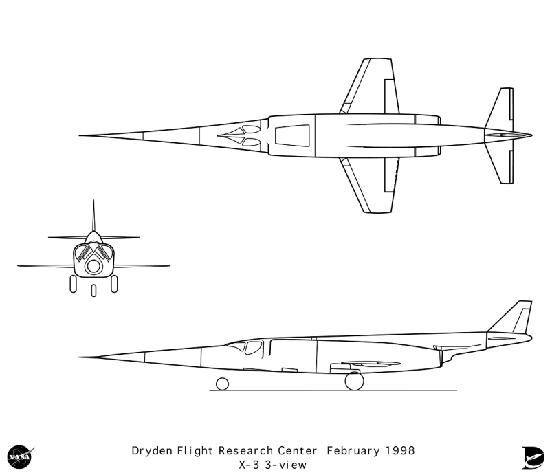 [/center]
[/center]






 [/center]
[/center][center]

The X-4, a single-place, swept-wing, and semi-tailless airplane designed and built by Northrop Aircraft, Inc. Two X-4s were built to investigate the value of this configuration at transonic speeds. The Ship 1 (46-676) maiden flight was on Dec. 16, 1948, and proved to be a mechanically unsound airplane, but Ship 2 (46-677) was very reliable.
While being tested from 1950 to 1953, the semi-tailless configuration exhibited inherent longitudinal stability problems (porpoising) as it approached the speed of sound, but the data derived from this research aircraft was important in the development of other high-performance designs such as the X-15.





[/center]

The X-4, a single-place, swept-wing, and semi-tailless airplane designed and built by Northrop Aircraft, Inc. Two X-4s were built to investigate the value of this configuration at transonic speeds. The Ship 1 (46-676) maiden flight was on Dec. 16, 1948, and proved to be a mechanically unsound airplane, but Ship 2 (46-677) was very reliable.
While being tested from 1950 to 1953, the semi-tailless configuration exhibited inherent longitudinal stability problems (porpoising) as it approached the speed of sound, but the data derived from this research aircraft was important in the development of other high-performance designs such as the X-15.





[/center]
[center]





 [/center]
[/center]





 [/center]
[/center][center]

The X-4, a single-place, swept-wing, and semi-tailless airplane designed and built by Northrop Aircraft, Inc. Two X-4s were built to investigate the value of this configuration at transonic speeds. The Ship 1 (46-676) maiden flight was on Dec. 16, 1948, and proved to be a mechanically unsound airplane, but Ship 2 (46-677) was very reliable.
While being tested from 1950 to 1953, the semi-tailless configuration exhibited inherent longitudinal stability problems (porpoising) as it approached the speed of sound, but the data derived from this research aircraft was important in the development of other high-performance designs such as the X-15.




 [/center]
[/center]

The X-4, a single-place, swept-wing, and semi-tailless airplane designed and built by Northrop Aircraft, Inc. Two X-4s were built to investigate the value of this configuration at transonic speeds. The Ship 1 (46-676) maiden flight was on Dec. 16, 1948, and proved to be a mechanically unsound airplane, but Ship 2 (46-677) was very reliable.
While being tested from 1950 to 1953, the semi-tailless configuration exhibited inherent longitudinal stability problems (porpoising) as it approached the speed of sound, but the data derived from this research aircraft was important in the development of other high-performance designs such as the X-15.




 [/center]
[/center][center]





 [/center]
[/center]





 [/center]
[/center][center]

The X-5 was tested from 1951 until 1955 at the NACA High-Speed Research Station. Built by Bell Aircraft Company, the X-5's maiden flight was June 20, 1951. The X-5 was the first aircraft capable of sweeping its wings in flight and helped our understanding of wing-sweep angles of 20, 45, and 60 degrees at subsonic and transonic speeds.
The X-5 was tested from 1951 until 1955 at the NACA High-Speed Flight Research Station. Built and initially flight tested by Bell Aircraft Corporation, the first X-5 flight was on June 20, 1951. The X-5 was the first aircraft capable of variably sweeping its wings in flight and helped our understanding of wing-sweep angles of 20, 45, and 60 degrees at subsonic and transonic speeds. The X-5 Ship #1 (50-1838) was flown by NACA from 1952 to late 1955. The X-5 Ship #2 (50-1839) was operated only by Bell and the Air Force and was lost in a spin accident in 1953
The X-5 was a single-place aircraft powered by an Allison J-45-A jet engine, and measuring 36 feet in length with a wingspan of 19 feet (with the wings swept back 60 degrees). The X-5 weighed 10,000 pounds when fully fueled.
Results of the research program demonstrated that the variable-wing-sweep principle worked. With the wings fully extended the low-speed performance was improved for take-off and landing and when swept back the high speed performance was improved and drag reduced. The pilots found they could use the variable wing sweep as a tactical control to out-perform the
accompanying escort aircraft during research missions. The X-5 flight tests provided some of the design background for the
F-111 and the Navy F-14 tactical aircraft.



 [/center]
[/center]

The X-5 was tested from 1951 until 1955 at the NACA High-Speed Research Station. Built by Bell Aircraft Company, the X-5's maiden flight was June 20, 1951. The X-5 was the first aircraft capable of sweeping its wings in flight and helped our understanding of wing-sweep angles of 20, 45, and 60 degrees at subsonic and transonic speeds.
The X-5 was tested from 1951 until 1955 at the NACA High-Speed Flight Research Station. Built and initially flight tested by Bell Aircraft Corporation, the first X-5 flight was on June 20, 1951. The X-5 was the first aircraft capable of variably sweeping its wings in flight and helped our understanding of wing-sweep angles of 20, 45, and 60 degrees at subsonic and transonic speeds. The X-5 Ship #1 (50-1838) was flown by NACA from 1952 to late 1955. The X-5 Ship #2 (50-1839) was operated only by Bell and the Air Force and was lost in a spin accident in 1953
The X-5 was a single-place aircraft powered by an Allison J-45-A jet engine, and measuring 36 feet in length with a wingspan of 19 feet (with the wings swept back 60 degrees). The X-5 weighed 10,000 pounds when fully fueled.
Results of the research program demonstrated that the variable-wing-sweep principle worked. With the wings fully extended the low-speed performance was improved for take-off and landing and when swept back the high speed performance was improved and drag reduced. The pilots found they could use the variable wing sweep as a tactical control to out-perform the
accompanying escort aircraft during research missions. The X-5 flight tests provided some of the design background for the
F-111 and the Navy F-14 tactical aircraft.



 [/center]
[/center][center]





 [/center]
[/center]





 [/center]
[/center][center]
美国X战机计划之 X-6

美国X战机计划之 X-7

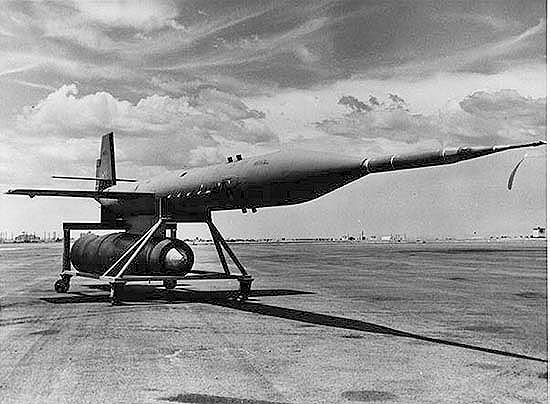
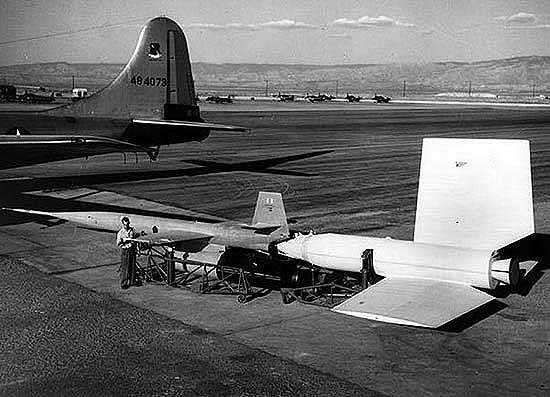
美国X战机计划之 X-8

美国X战机计划之 X-9

[/center]
美国X战机计划之 X-6

美国X战机计划之 X-7



美国X战机计划之 X-8

美国X战机计划之 X-9

[/center]
[em02][em02][em02][em02]
[center]
美国X战机计划之 X-10

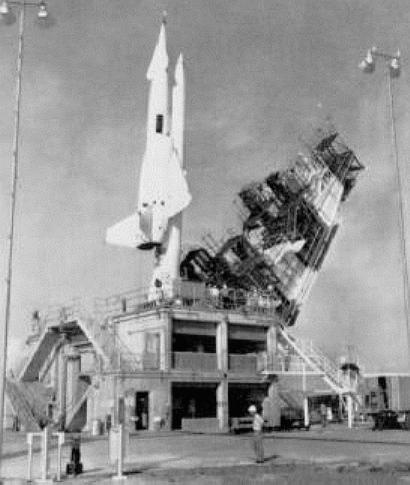

美国X战机计划之 X-11

美国X战机计划之 X-12

[/center]
美国X战机计划之 X-10



美国X战机计划之 X-11

美国X战机计划之 X-12

[/center]
[此贴子已经被作者于2005-1-21 20:18:57编辑过]
[center]
美国X战机计划之 X-14

Built under a US Air Force contract, the X-14 used a planar array of diverter vanes to vector the exhaust of two Armstrong Siddeley ASV8 Viper engines (1,750 lb thrust each) at the center of gravity (c.g.). The vanes could be rotated to direct the exhaust from vertical to nearly horizontal. The 25 ft fuselage and tail were from a Beech T-34; the 34 ft span wing was from a Beech Bonanza. The lack of a ejection seat limited hover testing to very low and very high altitudes. The gross weight was originally only 3,100 lb. The landing gear had to be lengthened when the phenomenon of suck-down was first discovered. Engine gyroscopic effects and exhaust gas reingestion were also encountered. First hover flight was achieved on 17 February 1957; first transition was made on 24 May 1958. The Viper engines were replaced with higher power GE J85 engines when it was transferred to NASA in 1960. It was eventually fitted with a digital fly-by-wire control system and continued flying as a V/STOL testbed until 1981!
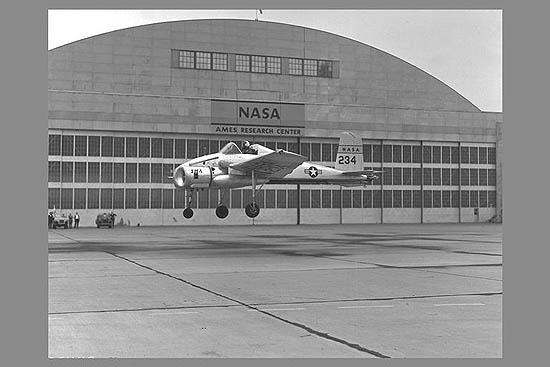
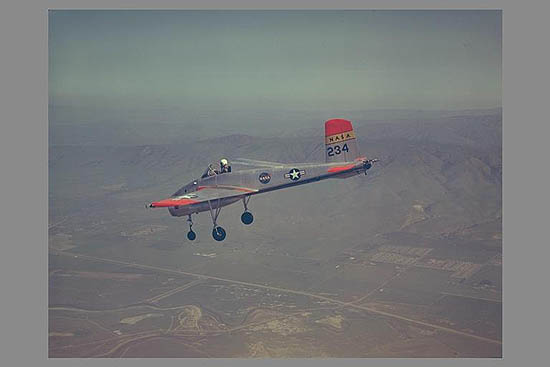
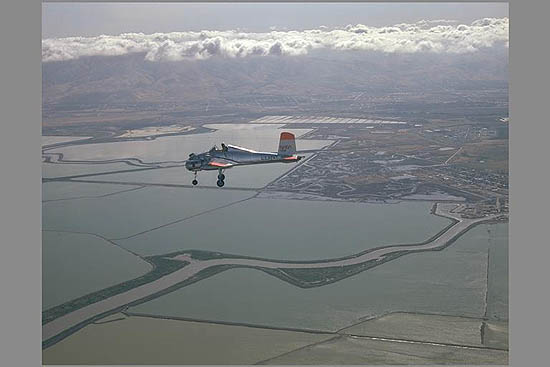
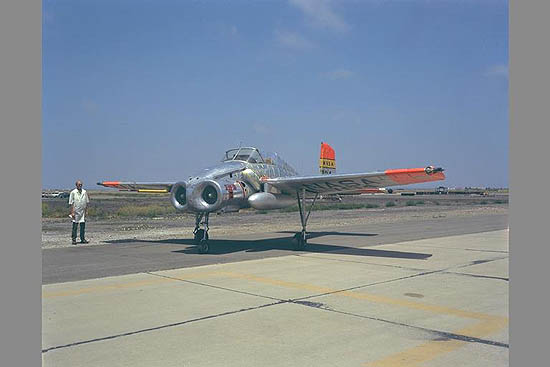
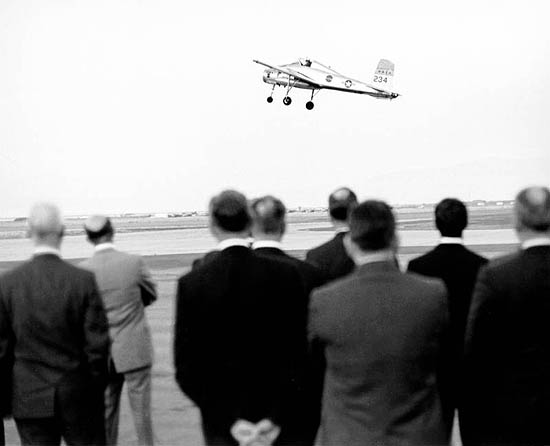 [/center]
[/center]
美国X战机计划之 X-14

Built under a US Air Force contract, the X-14 used a planar array of diverter vanes to vector the exhaust of two Armstrong Siddeley ASV8 Viper engines (1,750 lb thrust each) at the center of gravity (c.g.). The vanes could be rotated to direct the exhaust from vertical to nearly horizontal. The 25 ft fuselage and tail were from a Beech T-34; the 34 ft span wing was from a Beech Bonanza. The lack of a ejection seat limited hover testing to very low and very high altitudes. The gross weight was originally only 3,100 lb. The landing gear had to be lengthened when the phenomenon of suck-down was first discovered. Engine gyroscopic effects and exhaust gas reingestion were also encountered. First hover flight was achieved on 17 February 1957; first transition was made on 24 May 1958. The Viper engines were replaced with higher power GE J85 engines when it was transferred to NASA in 1960. It was eventually fitted with a digital fly-by-wire control system and continued flying as a V/STOL testbed until 1981!




 [/center]
[/center][center]
美国X战机计划之 X-15

These are the image contact sheets for each image resolution of the NASA Dryden X-15 Photo Gallery.
An unofficial motto of flight research in the 1940s and 1950s was "higher and faster." By the late 1950s the last frontier of that goal was hypersonic flight (Mach 5+) to the edge of space. It would require a huge leap in aeronautical technology, life support systems and flight planning. The North American X-15 rocket plane was built to meet that challenge. It was designed to fly at speeds up to Mach 6, and altitudes up to 250,000 ft. The aircraft went on to reach a maximum speed of Mach 6.7 and a maximum altitude of 354,200 ft. Looking at it another way, Mach 6 is about one mile per second, and flight above 265,000 ft. qualifies an Air Force pilot for astronaut wings.
The X-15 was a rocket-powered aircraft 50 ft long with a wingspan of 22 ft. It was a missile-shaped vehicle with an unusual wedge-shaped vertical tail, thin stubby wings, and unique side fairings that extended along the side of the fuselage. The X-15 weighed about 14,000 lb empty and approximately 34,000 lb at launch. The XLR-99 rocket engine, manufactured by Thiokol Chemical Corp., was pilot controlled and was capable of developing 57,000 lb of thrust. North American Aviation built three X-15 aircraft for the program.
The X-15 research aircraft was developed to provide in-flight information and data on aerodynamics, structures, flight controls, and the physiological aspects of high-speed, high-altitude flight. A follow-on program used the aircraft as a testbed to carry various scientific experiments beyond the Earth's atmosphere on a repeated basis.
For flight in the dense air of the usable atmosphere, the X-15 used conventional aerodynamic controls such as rudders on the vertical stabilizers to control yaw and movable horizontal stabilizers to control pitch when moving in synchronization or roll when moved differentially.
For flight in the thin air outside of the appreciable Earth's atmosphere, the X-15 used a reaction control system. Hydrogen peroxide thrust rockets located on the nose of the aircraft provided pitch and yaw control. Those on the wings controlled roll.
Because of the large fuel consumption, the X-15 was air launched from a B-52 aircraft at 45,000 ft and a speed of about 500 mph. Depending on the mission, the rocket engine provided thrust for the first 80 to 120 sec of flight. The remainder of the normal 10 to 11 min. flight was powerless and ended with a 200-mph glide landing.
Generally, one of two types of X-15 flight profiles was used; a high-altitude flight plan that called for the pilot to maintain a steep rate of climb, or a speed profile that called for the pilot to push over and maintain a level altitude.
The X-15 was flown over a period of nearly 10 years -- June 1959 to Oct. 1968 -- and set the world's unofficial speed and altitude records of 4,520 mph (Mach 6.7) and 354,200 ft in a program to investigate all aspects of piloted hypersonic flight. Information gained from the highly successful X-15 program contributed to the development of the Mercury, Gemini, and Apollo piloted spaceflight programs, and also the Space Shuttle program.
The X-15s made a total of 199 flights, and were manufactured by North American Aviation.
X-15-1, serial number 56-6670, is now located at the National Air and Space Museum, Washington DC.
North American X-15A-2, serial number 56-6671, is at the United States Air Force Museum, Wright-Patterson AFB, Ohio. X-15-3, serial number 56-6672, crashed on 15 November 1967, resulting in the death of Maj. Michael J. Adams. Parts of the X-15-3 are on display at the Air Force Flight Test Center Museum at Edwards AFB, and the San Diego Aerospace Museum, San Diego, California.



[/center]
美国X战机计划之 X-15

These are the image contact sheets for each image resolution of the NASA Dryden X-15 Photo Gallery.
An unofficial motto of flight research in the 1940s and 1950s was "higher and faster." By the late 1950s the last frontier of that goal was hypersonic flight (Mach 5+) to the edge of space. It would require a huge leap in aeronautical technology, life support systems and flight planning. The North American X-15 rocket plane was built to meet that challenge. It was designed to fly at speeds up to Mach 6, and altitudes up to 250,000 ft. The aircraft went on to reach a maximum speed of Mach 6.7 and a maximum altitude of 354,200 ft. Looking at it another way, Mach 6 is about one mile per second, and flight above 265,000 ft. qualifies an Air Force pilot for astronaut wings.
The X-15 was a rocket-powered aircraft 50 ft long with a wingspan of 22 ft. It was a missile-shaped vehicle with an unusual wedge-shaped vertical tail, thin stubby wings, and unique side fairings that extended along the side of the fuselage. The X-15 weighed about 14,000 lb empty and approximately 34,000 lb at launch. The XLR-99 rocket engine, manufactured by Thiokol Chemical Corp., was pilot controlled and was capable of developing 57,000 lb of thrust. North American Aviation built three X-15 aircraft for the program.
The X-15 research aircraft was developed to provide in-flight information and data on aerodynamics, structures, flight controls, and the physiological aspects of high-speed, high-altitude flight. A follow-on program used the aircraft as a testbed to carry various scientific experiments beyond the Earth's atmosphere on a repeated basis.
For flight in the dense air of the usable atmosphere, the X-15 used conventional aerodynamic controls such as rudders on the vertical stabilizers to control yaw and movable horizontal stabilizers to control pitch when moving in synchronization or roll when moved differentially.
For flight in the thin air outside of the appreciable Earth's atmosphere, the X-15 used a reaction control system. Hydrogen peroxide thrust rockets located on the nose of the aircraft provided pitch and yaw control. Those on the wings controlled roll.
Because of the large fuel consumption, the X-15 was air launched from a B-52 aircraft at 45,000 ft and a speed of about 500 mph. Depending on the mission, the rocket engine provided thrust for the first 80 to 120 sec of flight. The remainder of the normal 10 to 11 min. flight was powerless and ended with a 200-mph glide landing.
Generally, one of two types of X-15 flight profiles was used; a high-altitude flight plan that called for the pilot to maintain a steep rate of climb, or a speed profile that called for the pilot to push over and maintain a level altitude.
The X-15 was flown over a period of nearly 10 years -- June 1959 to Oct. 1968 -- and set the world's unofficial speed and altitude records of 4,520 mph (Mach 6.7) and 354,200 ft in a program to investigate all aspects of piloted hypersonic flight. Information gained from the highly successful X-15 program contributed to the development of the Mercury, Gemini, and Apollo piloted spaceflight programs, and also the Space Shuttle program.
The X-15s made a total of 199 flights, and were manufactured by North American Aviation.
X-15-1, serial number 56-6670, is now located at the National Air and Space Museum, Washington DC.
North American X-15A-2, serial number 56-6671, is at the United States Air Force Museum, Wright-Patterson AFB, Ohio. X-15-3, serial number 56-6672, crashed on 15 November 1967, resulting in the death of Maj. Michael J. Adams. Parts of the X-15-3 are on display at the Air Force Flight Test Center Museum at Edwards AFB, and the San Diego Aerospace Museum, San Diego, California.



[/center]
[center]





 [/center]
[/center]





 [/center]
[/center][center]





 [/center]
[/center]





 [/center]
[/center][center]





 [/center]
[/center]





 [/center]
[/center][center]





 [/center]
[/center]





 [/center]
[/center][center]





 [/center]
[/center]





 [/center]
[/center][center]





 [/center]
[/center]





 [/center]
[/center][center]





 [/center]
[/center]





 [/center]
[/center][center]





 [/center]
[/center]





 [/center]
[/center][center]
美国X战机计划之 X-16

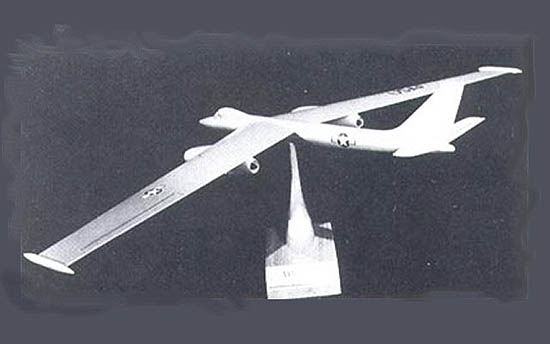




[/center]
美国X战机计划之 X-16






[/center]
[center]


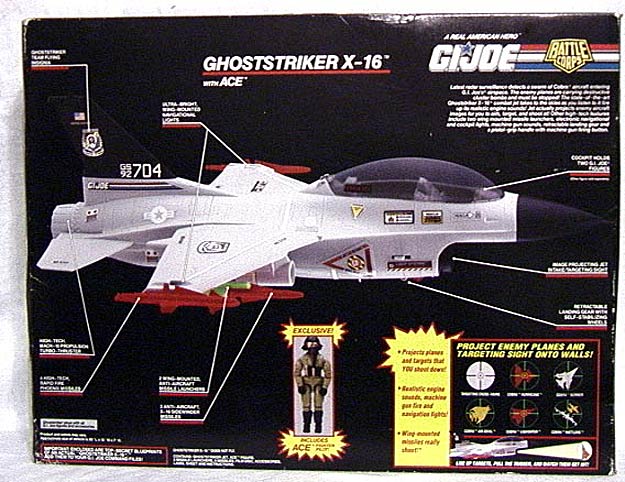
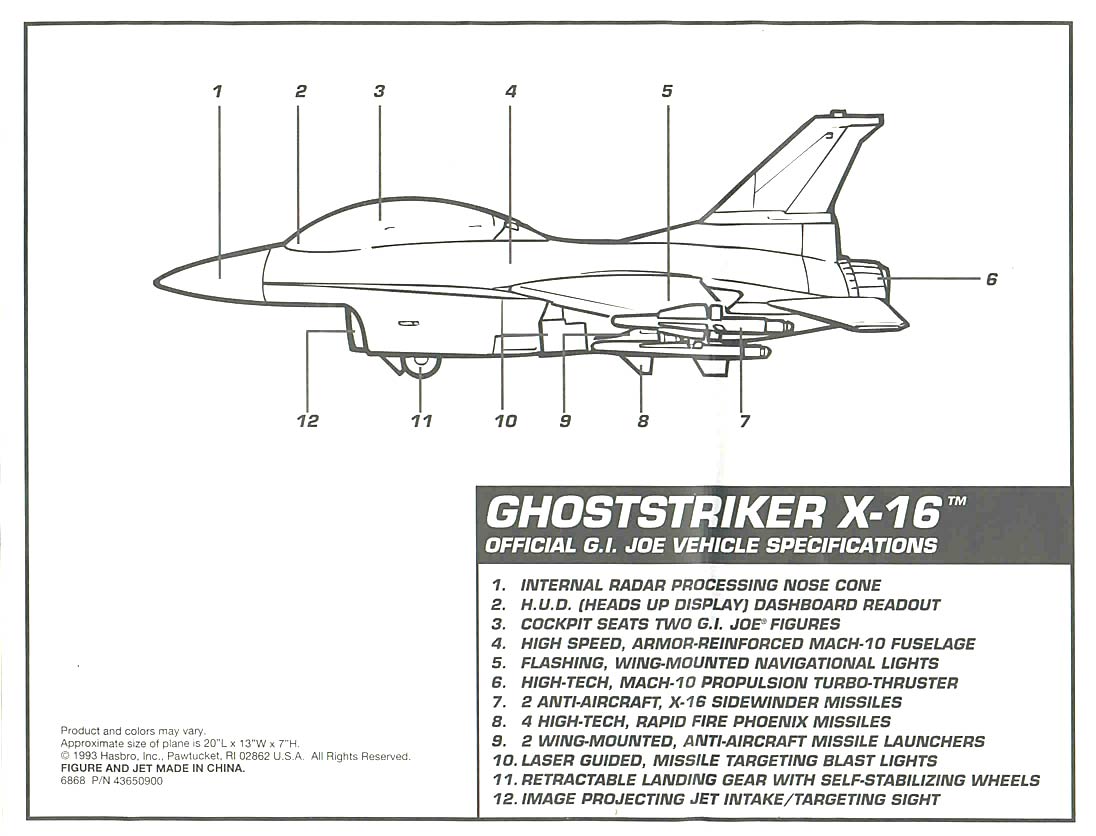
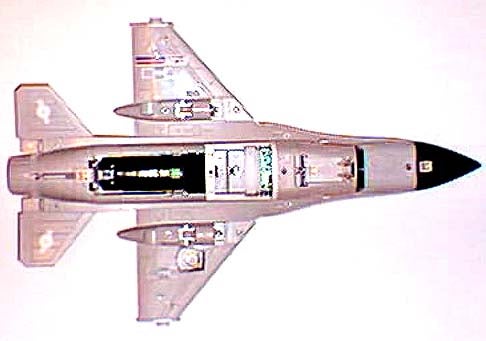

[/center]






[/center]
[center]美国X战机计划之 X-17[/center]
[center]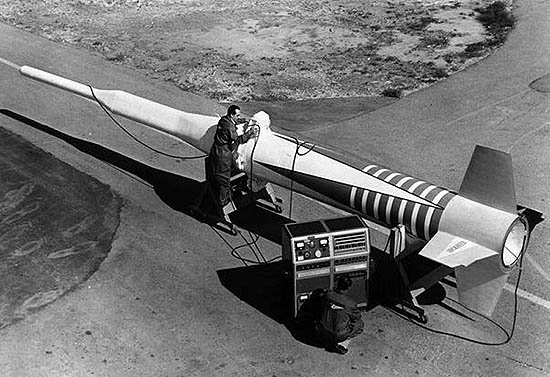
X-17 实验机在地面[/center]
When the USAF's long-range ballistic missile development got underway in 1953/54, it was realized that there was no data available about the aerothermodynamics of the atmospheric reentry of a missile nose cone at very high speeds. To fulfill the need for a dedicated research vehicle, Lockheed received a contract for the design and construction of the X-17 missile in January 1955. The X-17 was a multistage vehicle using available and proven rocket motors and a relatively simple control system. Therefore the design phase was very short, and the first quarter-scale proof-of-concept vehicle was already launched in May 1955.
[center]
发射台上[/center]
The X-17 was powered by three solid-propellant rocket stages. The first stage, consisting of a single Thiokol XM20 Sergeant motor, had four stabilizing fins and two small external (strap-on) spin motors, which were jettisoned shortly after launch. After first stage shutdown, the missile coasted to an apogee of about 150 km (500000 ft), where it pitched over for a nose-down reentry. At an altitude of around 21 - 27 km (70000 - 90000 ft), the first stage was separated, immediately followed by firing of the short duration second and third stage motors. At burnout of the final stage, the X-17 had reached a speed between Mach 11 and Mach 14.5, depending on reentry angle. Equipment of the missile included a telemetry system and an AN/DPN-19 radar beacon to facilitate tracking.
[center]
X-17 实验机在运输途中[/center]
Three launches of quarter-scale vehicles were followed by three half-scale missiles in June and July 1955, and then by six full-scale development vehicles between August 1955 and March 1956. A problem with second/third stage performance lead to a slight delay in the program. The first actual X-17 research missile was finally launched in April 1956, followed by 25 additional flights until March 1957. The program achieved all its objectives, and several different nose cone shapes were tested under high-speed reentry conditions.
[center]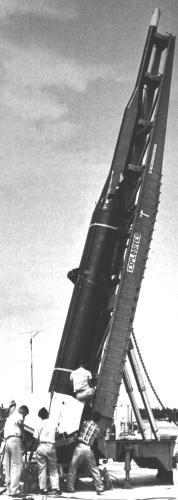
X-17 实验机在准备发射中[/center]
In 1958, seven more X-17 missiles were built for Project "Argus", which tested the effects of nuclear explosions outside the atmosphere. For this purpose, all three stages of the X-17 were fired during the climb phase, allowing the missile to reach altitudes of up to 480 km (300 miles). Four unarmed "Argus" launches were followed by three nuclear shots (with yields of 1-2 kT) during August and September 1958.
[center]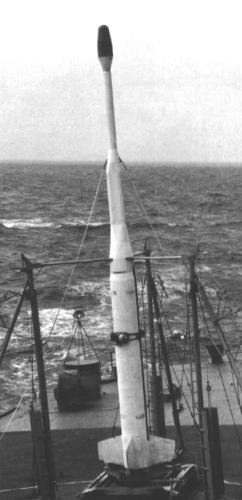
X-17 实验机在海上平台准备发射[/center]
Data for X-17:
Length12.33 m (40 ft 5.5 in)
Finspan2.31 m (7 ft 7 in)
Diameter1st stage: 79 cm (31 in)
2nd stage: 43 cm (17 in)
3rd stage: 24.7 cm (9.72 in)
Weight5400 kg (12000 lb)
SpeedMach 14.5
Ceiling150 km (500000 ft); 480 km (300 miles) in three-stage ascent
Propulsion1st stage: Thiokol XM20 Sergeant solid-fueled rocket; 213 kN (48000 lb) for 28 s
2nd stage: 3x Thiokol XM19 Recruit solid-fueled rocket; 150 kN (33900 lb) each for 1.53 s
3rd stage: Thiokol XM19E1 Recruit solid-fueled rocket; 160 kN (35950 lb) for 1.53 s
[center]

X-17 实验机在地面[/center]
When the USAF's long-range ballistic missile development got underway in 1953/54, it was realized that there was no data available about the aerothermodynamics of the atmospheric reentry of a missile nose cone at very high speeds. To fulfill the need for a dedicated research vehicle, Lockheed received a contract for the design and construction of the X-17 missile in January 1955. The X-17 was a multistage vehicle using available and proven rocket motors and a relatively simple control system. Therefore the design phase was very short, and the first quarter-scale proof-of-concept vehicle was already launched in May 1955.
[center]

发射台上[/center]
The X-17 was powered by three solid-propellant rocket stages. The first stage, consisting of a single Thiokol XM20 Sergeant motor, had four stabilizing fins and two small external (strap-on) spin motors, which were jettisoned shortly after launch. After first stage shutdown, the missile coasted to an apogee of about 150 km (500000 ft), where it pitched over for a nose-down reentry. At an altitude of around 21 - 27 km (70000 - 90000 ft), the first stage was separated, immediately followed by firing of the short duration second and third stage motors. At burnout of the final stage, the X-17 had reached a speed between Mach 11 and Mach 14.5, depending on reentry angle. Equipment of the missile included a telemetry system and an AN/DPN-19 radar beacon to facilitate tracking.
[center]

X-17 实验机在运输途中[/center]
Three launches of quarter-scale vehicles were followed by three half-scale missiles in June and July 1955, and then by six full-scale development vehicles between August 1955 and March 1956. A problem with second/third stage performance lead to a slight delay in the program. The first actual X-17 research missile was finally launched in April 1956, followed by 25 additional flights until March 1957. The program achieved all its objectives, and several different nose cone shapes were tested under high-speed reentry conditions.
[center]

X-17 实验机在准备发射中[/center]
In 1958, seven more X-17 missiles were built for Project "Argus", which tested the effects of nuclear explosions outside the atmosphere. For this purpose, all three stages of the X-17 were fired during the climb phase, allowing the missile to reach altitudes of up to 480 km (300 miles). Four unarmed "Argus" launches were followed by three nuclear shots (with yields of 1-2 kT) during August and September 1958.
[center]

X-17 实验机在海上平台准备发射[/center]
Data for X-17:
Length12.33 m (40 ft 5.5 in)
Finspan2.31 m (7 ft 7 in)
Diameter1st stage: 79 cm (31 in)
2nd stage: 43 cm (17 in)
3rd stage: 24.7 cm (9.72 in)
Weight5400 kg (12000 lb)
SpeedMach 14.5
Ceiling150 km (500000 ft); 480 km (300 miles) in three-stage ascent
Propulsion1st stage: Thiokol XM20 Sergeant solid-fueled rocket; 213 kN (48000 lb) for 28 s
2nd stage: 3x Thiokol XM19 Recruit solid-fueled rocket; 150 kN (33900 lb) each for 1.53 s
3rd stage: Thiokol XM19E1 Recruit solid-fueled rocket; 160 kN (35950 lb) for 1.53 s
[center]
美国X战机计划之 X-18
The Hiller X-18, begun in February 1957, used various components from existing aircraft. The fuselage was that of a Chase YC-122C transport. The two wing-mounted 7,100 eshp Allison T40-A-14 turboshafts came from the XFY-1/XFV-1 tailsitter (#23 and #24) program and could not be cross-linked. It had three engines, the two turboprops drove the 16 ft diameter counter-rotating three-bladed propellers and a 3,400 lb thrust Westinghouse J34 turbojet which produced pitch control thrust. The 33,000 lb loaded X-18 underwent extensive ground tests beginning in December 1958, and made its first conventional flight on 24 November 1959. It made partial conversions with wing angles of up to 33° (relative to the fuselage) -- with a 17° nose-up attitude, the wings had an effective 50° degrees of tilt (relative to the flight path). The turboprop engines had electric pitch controls and were too slow to provide adequate response in hover. On the 20th flight it had a propeller pitch control problem at 10,000 ft and went into a spin. It was recovered before impact, but was grounded, having never achieved hover. It continued to test ground effects before it was damaged by a test stand failure.
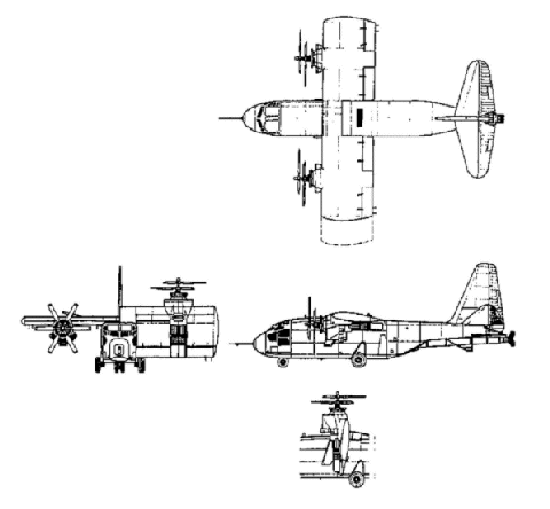
x-18 设计图

x-18实验机

x-18实验机在平台上

x-18实验机

x-18实验机在做起飞准备

x-18实验机详解图

x-18实验机三视图
[/center]
美国X战机计划之 X-18
The Hiller X-18, begun in February 1957, used various components from existing aircraft. The fuselage was that of a Chase YC-122C transport. The two wing-mounted 7,100 eshp Allison T40-A-14 turboshafts came from the XFY-1/XFV-1 tailsitter (#23 and #24) program and could not be cross-linked. It had three engines, the two turboprops drove the 16 ft diameter counter-rotating three-bladed propellers and a 3,400 lb thrust Westinghouse J34 turbojet which produced pitch control thrust. The 33,000 lb loaded X-18 underwent extensive ground tests beginning in December 1958, and made its first conventional flight on 24 November 1959. It made partial conversions with wing angles of up to 33° (relative to the fuselage) -- with a 17° nose-up attitude, the wings had an effective 50° degrees of tilt (relative to the flight path). The turboprop engines had electric pitch controls and were too slow to provide adequate response in hover. On the 20th flight it had a propeller pitch control problem at 10,000 ft and went into a spin. It was recovered before impact, but was grounded, having never achieved hover. It continued to test ground effects before it was damaged by a test stand failure.

x-18 设计图

x-18实验机

x-18实验机在平台上

x-18实验机

x-18实验机在做起飞准备

x-18实验机详解图

x-18实验机三视图
[/center]
[center]


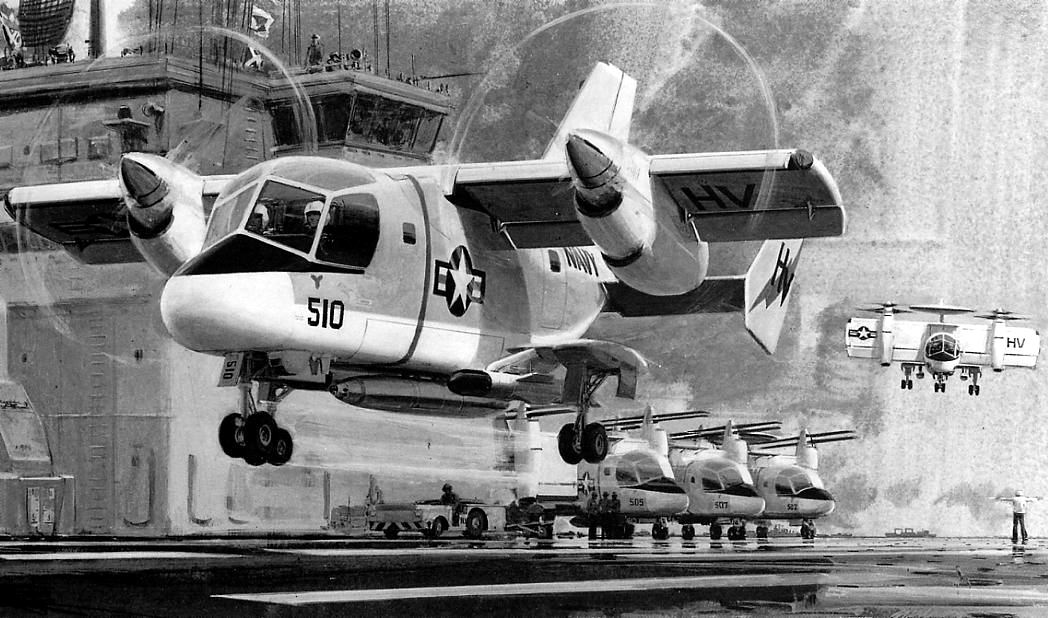
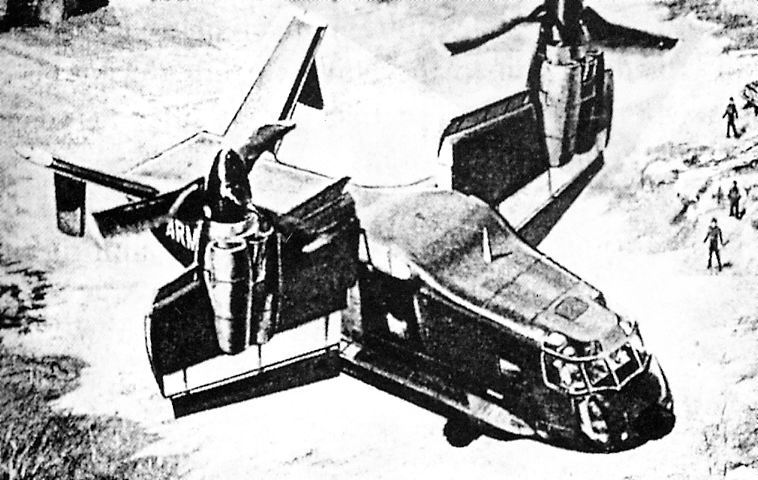


[/center]






[/center]
[center]



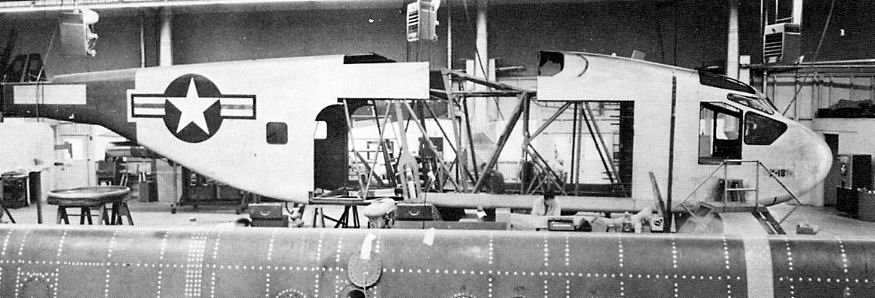


[/center]






[/center]
[center]


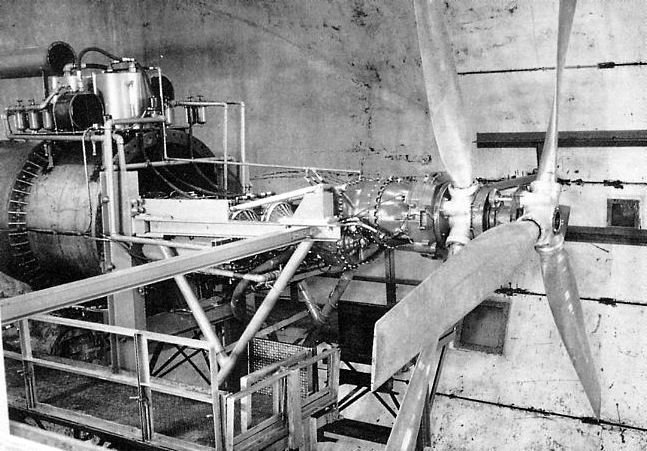


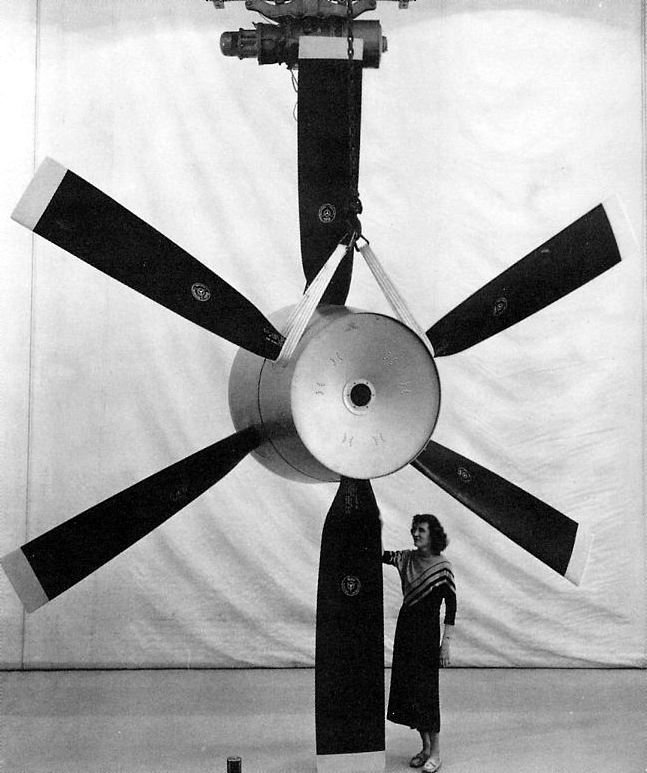
[/center]






[/center]
[center]
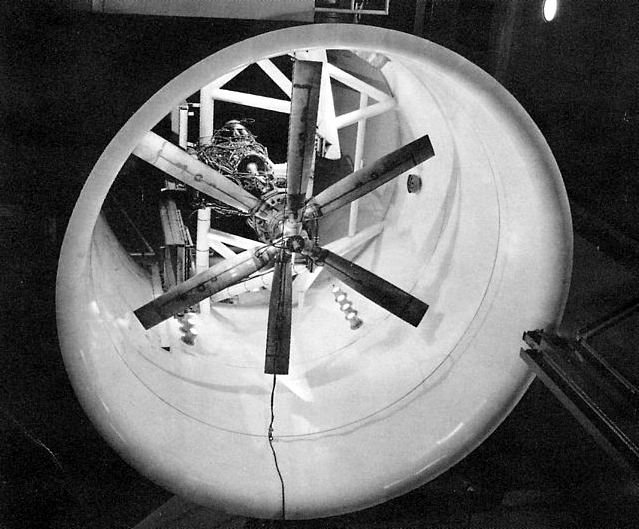


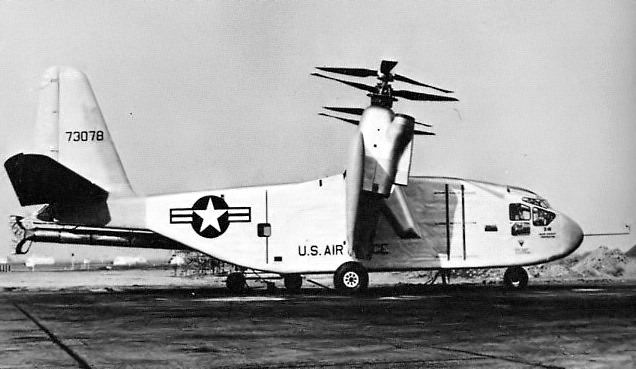


[/center]






[/center]
[center]
美国X战机计划之 X-19

The Tri-Service Program required a few changes to convert the M-200 into the X-19. North American Aviation LW-2B ejection seats, which used a rocket catapult mechanism and ballistically deployed parachutes, were added. These seats could operate from zero altitude and zero airspeed up to 15250m and deploy fully within 0.5 second from seat firing. The seats ejected through the canopy. The fuselage was lengthened by 0.9m so that two more passenger seats could be added, bringing the total personnel load up to two pilots and six passengers. This increased the fuselage length to 13.5m. The cabin door was enlarged to 1.06m high and 1.17m long, and a rescue hoist was added. The resulting aircraft was a bit long for a six passenger aircraft, but this was attributed mostly to the engines and fuel tanks being located in the fuselage. The only difference between the two prototypes was that the second had better instrumentation and data recording, and also had a dummy refueling probe installed on the nose to evaluate probe and drogue in-flight refueling.
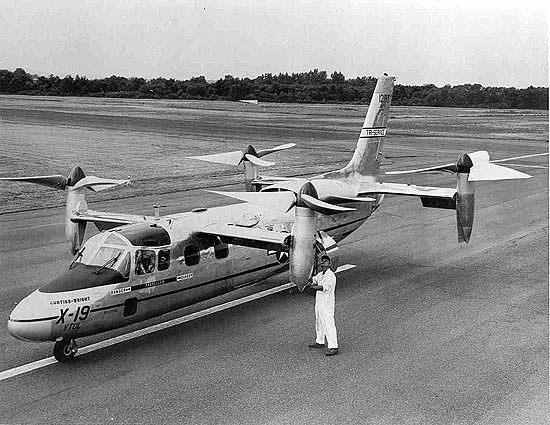
Weight growth after adding the ejection seats and stretching the fuselage resulted in the useful load being reduced to 185kg. This allowed for only one pilot and fuel for 10 minutes of hovering. With two pilots, the hovering time was cut to 1 minute. However, there was still 270kg of unusable fuel because of the location of the fuel pumps inside the tanks. The pump position was changed to improve the amount of usable fuel.
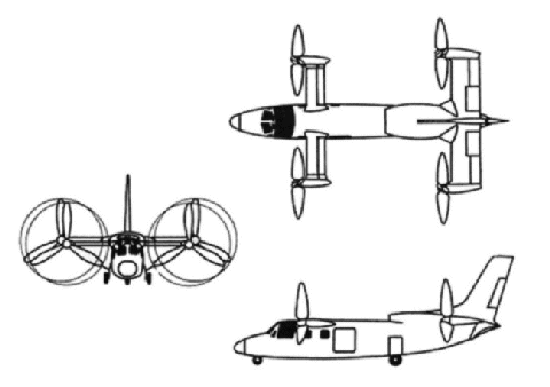
The X-19 was statically unstable in hover and in pitch and roll at low speed, mandating the addition of stability augmentation in both of these axes. Control by the augmentation system was limited to 30 percent of the pilots' control authority, so the pilot could override it if necessary. No stability augmentation was needed for yaw. The system initially mechanized rate feedback, but initial testing showed this to be of little use to pilot. The system was changed to a rate plus integral of rate, which improved control for hover and low speed flight. The X-19 was test flown with the stability augmentation turned off. Although it was controllable by the pilot, the workload was unacceptable.

The X-19's "Achilles' Heel" proved to be its gear boxes. All gear boxes were designed to absorb the power required to lift the aircraft at a maximum weight of 5540kg. Great difficulty was encountered in qualifying them, and very low life limits were established in order to conduct flight tests.
The engine coupling gear box, which combined the power output of the two engines, was capable of absorbing 2.900 horsepower with both engines running, or 2500hp from only one engine. With each engine producing 2200hp (or 2650hp, depending on the reference), the gear box obviously could not absorb full power from both engines. In addition, it was limited to 50 hours of operation. Likewise, the nacelle gear boxes had estimated lives of 13-14 hours and were thus limited to 5 hours of operation. The problem was felt to be improper heat treating of the gears.

Wind tunnel tests of the initial design indicated an unac-ceptably high amount of interference drag at the junctions of the wing/fuselage and wing/nacelle. Drag clean up measures were taken, and more wind tunnel tests were run to confirm the improvement. The rear wing had significant lift loss due to downwash from the front wing, but knowing this, it was compensated for in the basic design. Airframe structural tests revealed no major problems. Full scale static propeller tests were performed to evaluate and reduce download losses on the wing at hover.

The first full transition was planned for August 25, 1965, on flight number 50. As the X-19 climbed and accelerated, the nacelles tilted as far as 65 degrees from vertical as the aircraft reached 150km/h at 400m. At this point, the temperature warning lights for left rear nacelle gear box and aft T-box illuminated. The pilots terminated the test and began a return to the airport. An immediate, emergency landing did not appear warranted, and the pilots planned a normal approach based on the recommendation from the ground support team. As they circled to line up with the preferred runway, a very high frequency vibration and a low frequency random shake began. Lateral control began to deteriorate. With the X-19 pointed toward a wooded area at low altitude and fearing that they would not clear the trees, the copilot jammed the throttles forward. As they climbed and accelerated, some control was regained and the vibrations smoothed out. At 120m, the left rear prop snapped off, and the X-19 rolled to the left and pitched up. This was followed promptly by the separation of the left front prop, then the two right props. The pilots bailed out inverted, their parachutes deploying fully within 2 seconds at an altitude of 70m. The aircraft crashed into a nearby swampy area and was totally destroyed. The pilots suffered only minor injuries, mostly cuts from ejecting through the canopy. The time from loss of props to ejection was only 2.5 seconds. The cause of the crash was attributed to the copilot's applying full power. The drive system could not absorb the 4400hp being generated, resulting in the failure of the prop gear box. Total flight time for the flight was only seven minutes.
[/center]
美国X战机计划之 X-19

The Tri-Service Program required a few changes to convert the M-200 into the X-19. North American Aviation LW-2B ejection seats, which used a rocket catapult mechanism and ballistically deployed parachutes, were added. These seats could operate from zero altitude and zero airspeed up to 15250m and deploy fully within 0.5 second from seat firing. The seats ejected through the canopy. The fuselage was lengthened by 0.9m so that two more passenger seats could be added, bringing the total personnel load up to two pilots and six passengers. This increased the fuselage length to 13.5m. The cabin door was enlarged to 1.06m high and 1.17m long, and a rescue hoist was added. The resulting aircraft was a bit long for a six passenger aircraft, but this was attributed mostly to the engines and fuel tanks being located in the fuselage. The only difference between the two prototypes was that the second had better instrumentation and data recording, and also had a dummy refueling probe installed on the nose to evaluate probe and drogue in-flight refueling.

Weight growth after adding the ejection seats and stretching the fuselage resulted in the useful load being reduced to 185kg. This allowed for only one pilot and fuel for 10 minutes of hovering. With two pilots, the hovering time was cut to 1 minute. However, there was still 270kg of unusable fuel because of the location of the fuel pumps inside the tanks. The pump position was changed to improve the amount of usable fuel.

The X-19 was statically unstable in hover and in pitch and roll at low speed, mandating the addition of stability augmentation in both of these axes. Control by the augmentation system was limited to 30 percent of the pilots' control authority, so the pilot could override it if necessary. No stability augmentation was needed for yaw. The system initially mechanized rate feedback, but initial testing showed this to be of little use to pilot. The system was changed to a rate plus integral of rate, which improved control for hover and low speed flight. The X-19 was test flown with the stability augmentation turned off. Although it was controllable by the pilot, the workload was unacceptable.

The X-19's "Achilles' Heel" proved to be its gear boxes. All gear boxes were designed to absorb the power required to lift the aircraft at a maximum weight of 5540kg. Great difficulty was encountered in qualifying them, and very low life limits were established in order to conduct flight tests.
The engine coupling gear box, which combined the power output of the two engines, was capable of absorbing 2.900 horsepower with both engines running, or 2500hp from only one engine. With each engine producing 2200hp (or 2650hp, depending on the reference), the gear box obviously could not absorb full power from both engines. In addition, it was limited to 50 hours of operation. Likewise, the nacelle gear boxes had estimated lives of 13-14 hours and were thus limited to 5 hours of operation. The problem was felt to be improper heat treating of the gears.

Wind tunnel tests of the initial design indicated an unac-ceptably high amount of interference drag at the junctions of the wing/fuselage and wing/nacelle. Drag clean up measures were taken, and more wind tunnel tests were run to confirm the improvement. The rear wing had significant lift loss due to downwash from the front wing, but knowing this, it was compensated for in the basic design. Airframe structural tests revealed no major problems. Full scale static propeller tests were performed to evaluate and reduce download losses on the wing at hover.

The first full transition was planned for August 25, 1965, on flight number 50. As the X-19 climbed and accelerated, the nacelles tilted as far as 65 degrees from vertical as the aircraft reached 150km/h at 400m. At this point, the temperature warning lights for left rear nacelle gear box and aft T-box illuminated. The pilots terminated the test and began a return to the airport. An immediate, emergency landing did not appear warranted, and the pilots planned a normal approach based on the recommendation from the ground support team. As they circled to line up with the preferred runway, a very high frequency vibration and a low frequency random shake began. Lateral control began to deteriorate. With the X-19 pointed toward a wooded area at low altitude and fearing that they would not clear the trees, the copilot jammed the throttles forward. As they climbed and accelerated, some control was regained and the vibrations smoothed out. At 120m, the left rear prop snapped off, and the X-19 rolled to the left and pitched up. This was followed promptly by the separation of the left front prop, then the two right props. The pilots bailed out inverted, their parachutes deploying fully within 2 seconds at an altitude of 70m. The aircraft crashed into a nearby swampy area and was totally destroyed. The pilots suffered only minor injuries, mostly cuts from ejecting through the canopy. The time from loss of props to ejection was only 2.5 seconds. The cause of the crash was attributed to the copilot's applying full power. The drive system could not absorb the 4400hp being generated, resulting in the failure of the prop gear box. Total flight time for the flight was only seven minutes.
[/center]